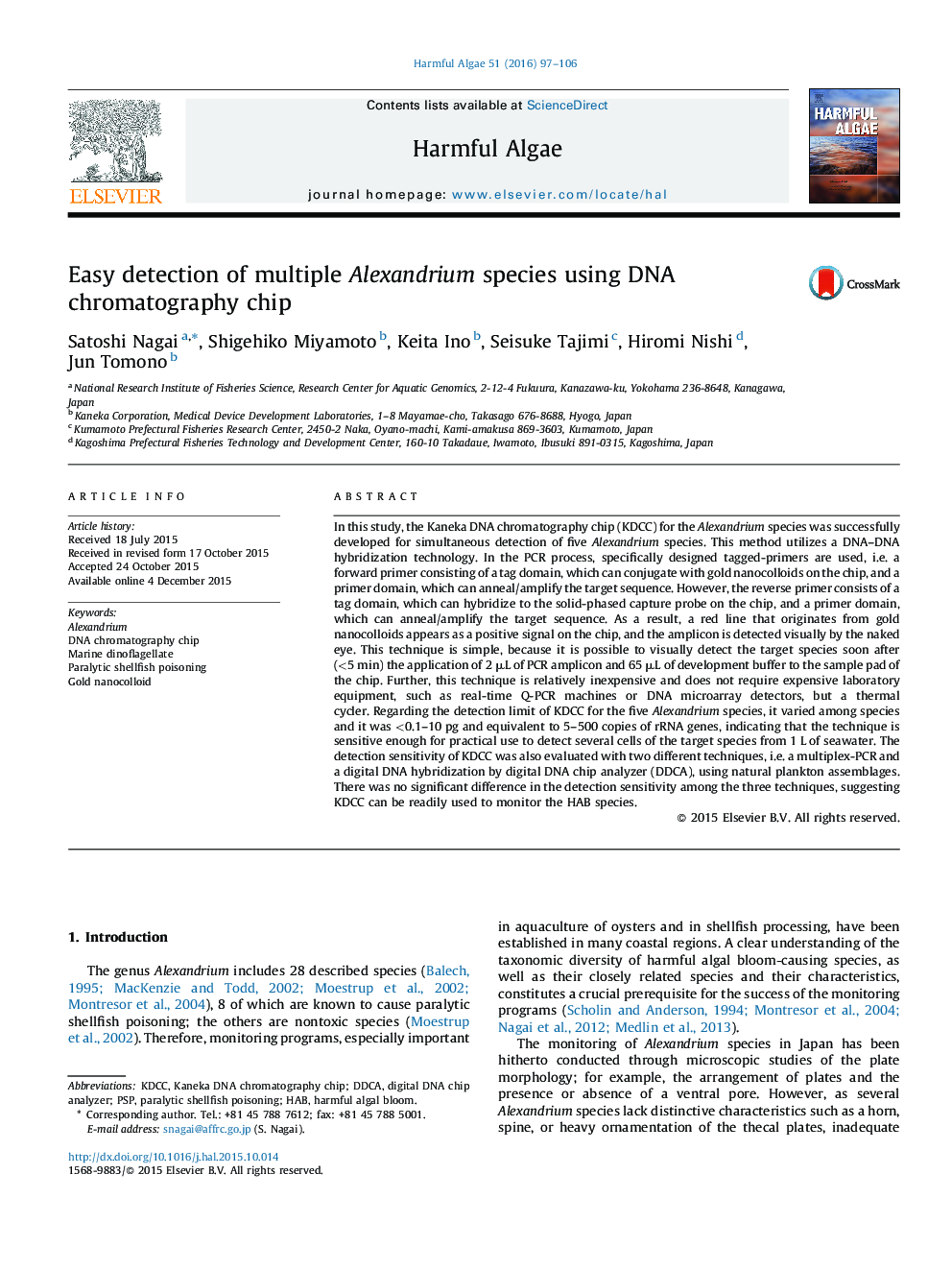| کد مقاله | کد نشریه | سال انتشار | مقاله انگلیسی | نسخه تمام متن |
|---|---|---|---|---|
| 4545165 | 1626920 | 2016 | 10 صفحه PDF | دانلود رایگان |

• The Kaneka DNA chromatography chip (KDCC) was successfully developed for simultaneous detection of five Alexandrium species.
• The results can be easily interpreted by simply observing the positive signals, i.e. a red line originated from gold nanocolloid within 5 min after applying the PCR products and the development buffer on the chip.
• Detection limit of KDCC varied among species and it was <0.1–10 pg and equivalent to 5–500 copies of rRNA genes, indicating that the technique is sensitive enough for practical use of Alexandrium monitoring.
In this study, the Kaneka DNA chromatography chip (KDCC) for the Alexandrium species was successfully developed for simultaneous detection of five Alexandrium species. This method utilizes a DNA–DNA hybridization technology. In the PCR process, specifically designed tagged-primers are used, i.e. a forward primer consisting of a tag domain, which can conjugate with gold nanocolloids on the chip, and a primer domain, which can anneal/amplify the target sequence. However, the reverse primer consists of a tag domain, which can hybridize to the solid-phased capture probe on the chip, and a primer domain, which can anneal/amplify the target sequence. As a result, a red line that originates from gold nanocolloids appears as a positive signal on the chip, and the amplicon is detected visually by the naked eye. This technique is simple, because it is possible to visually detect the target species soon after (<5 min) the application of 2 μL of PCR amplicon and 65 μL of development buffer to the sample pad of the chip. Further, this technique is relatively inexpensive and does not require expensive laboratory equipment, such as real-time Q-PCR machines or DNA microarray detectors, but a thermal cycler. Regarding the detection limit of KDCC for the five Alexandrium species, it varied among species and it was <0.1–10 pg and equivalent to 5–500 copies of rRNA genes, indicating that the technique is sensitive enough for practical use to detect several cells of the target species from 1 L of seawater. The detection sensitivity of KDCC was also evaluated with two different techniques, i.e. a multiplex-PCR and a digital DNA hybridization by digital DNA chip analyzer (DDCA), using natural plankton assemblages. There was no significant difference in the detection sensitivity among the three techniques, suggesting KDCC can be readily used to monitor the HAB species.
Journal: Harmful Algae - Volume 51, January 2016, Pages 97–106